
-
Find the right food for your pet
Take this quiz to see which food may be the best for your furry friend.
Find the right food for your pet
Take this quiz to see which food may be the best for your furry friend.
Featured products
 Adult 7+ Perfect Digestion Chicken, Whole Oats & Brown Rice Recipe Dog Food
Adult 7+ Perfect Digestion Chicken, Whole Oats & Brown Rice Recipe Dog FoodScience Diet's breakthrough nutrition supports ultimate digestive well-being & healthy microbiome for dogs age 7+
Shop Now Small & Mini Savory Stew with Chicken & Vegetables Dog Food
Small & Mini Savory Stew with Chicken & Vegetables Dog FoodA delicious complement to the nutrition of Science Diet Small & Mini 7+ dog food
Shop Now Adult Healthy Cuisine Roasted Chicken, Carrots & Spinach Stew Dog Food
Adult Healthy Cuisine Roasted Chicken, Carrots & Spinach Stew Dog FoodDelicious roasted chicken paired with tender vegetables in a succulent stew
Shop NowFeatured products
 Adult 7+ Tender Tuna Dinner Cat Food
Adult 7+ Tender Tuna Dinner Cat FoodWith delicious chunks in a decadent gravy
Shop Now Adult 7+ Senior Vitality Chicken & Vegetable Stew Cat Food
Adult 7+ Senior Vitality Chicken & Vegetable Stew Cat FoodImproves Everyday Ability to Get Up & Go
Shop Now Adult Savory Entrée Can Variety Pack Cat Food
Adult Savory Entrée Can Variety Pack Cat FoodPrecisely balanced nutrition with the delicious taste of savory minced chicken to help fuel the energy needs of cats during the prime of their life
Shop Now -
Dog
- Dog Tips & Articles
-
Health Category
- Weight
- Food & Environmental Sensitivities
- Urinary
- Digestive
- Joint
- Kidney
-
Life Stage
- Puppy Nutrition
- Adult Nutrition
- Senior Nutrition
Cat
- Cat Tips & Articles
-
Health Category
- Weight
- Skin & Food Sensitivities
- Urinary
- Digestive
- Kidney
-
Life Stage
- Kitten Nutrition
- Adult Nutrition
Featured articles
 Does My Pet Hate Me?
Does My Pet Hate Me?Learn tips for bonding with your pet if you've ever thought, 'My dog doesn't like me, or 'Why do I have a standoffish cat?'
Read More Why Are Dogs and Cats So Cute?
Why Are Dogs and Cats So Cute?If waggy puppy dog tails and furry kitten yawns make you swoon, you're not alone. Why are cats so cute? And, dogs too! Let's find out!
Read More Do Dogs and Cats have Belly Buttons?
Do Dogs and Cats have Belly Buttons?Learn whether cats & dogs have belly buttons like humans, what the function is, and if there are any health concerns associated with it.
Read More -


Did you know cats can get frostbite just like humans? Cat frostbite, usually frostbite on cat ears, is a common skin injury seen in cats that live in areas where the outside temperature dips below 32 degrees Fahrenheit/zero degrees Celsius. However, with the right care, injury from frostbite can be easily prevented. Let's take a closer look into what frostbite is, signs that your cat might have it and possible treatment options.
What Is Cat Frostbite?
Frostbite is damage to the skin caused by prolonged exposure to freezing temperatures. When skin is exposed to freezing temperatures, it constricts the blood vessels that supply blood to the skin. When this happens, the warmth, oxygen and nutrients that the blood delivers to the skin are diverted to maintain the body's core temperature. As a result, skin freezes, forming ice crystals inside skin cells that cause the cells to rupture and die. While this mechanism preserves the cat's life, cat frostbite can result in irreversible damage to the skin. The skin covering the extremities — including the tail, paws, nose and ears — is at the highest risk for frostbite.
The severity of frostbite is graded by degrees. First-degree frostbite is the mildest form that only affects the top layer of skin and usually doesn't cause permanent injury. Third- and fourth-degree frostbite occurs when the whole foot, leg, nose or ear freezes, resulting in permanent damage and disfiguration.
What Are the Clinical Signs of Cat Frostbite?
Clinical signs of cat frostbite are easy to identify. They include:
- Discolored skin (white, gray, blue, red, deep purple or black)
- Skin that becomes red, swollen and painful as it thaws out
- Blisters that can be filled with blood
- Skin or extremities that feel hard and cold
- Fragile, cold skin that breaks when you touch it
- Ulcers on the skin
- Dead skin that sloughs off
The signs of frostbite can take several days to weeks to develop, especially on the tips of the ears, and if the frostbite kills the skin, the skin will gradually become blacker and dead-looking until it finally falls off.
Any cat that lives outdoors where the temperature gets below 32 degrees Fahrenheit (zero degrees Celsius) is at risk for developing frostbite. Kittens and senior cats are also at a higher risk for frostbite, and any cats that have medical conditions that reduce blood flow to the extremities, such as diabetes mellitus, heart disease, kidney disease or hyperthyroidism, are also at an increased risk for frostbite.
What Should I Do if I Think My Cat Has Frostbite?
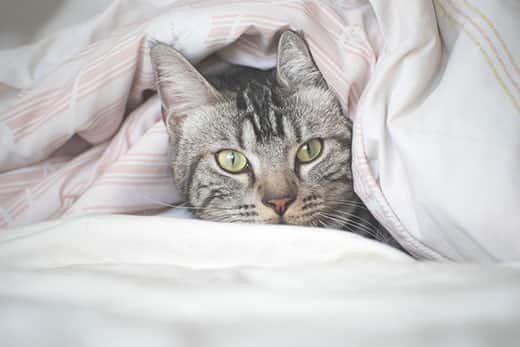
If you think your cat is suffering from frostbite, you can take the following steps to help your cat:
- Bring your cat indoors to a place that's warm and dry.
- If your cat is shivering, lethargic or feels cold, hypothermia may be a concern, according to Animed. Wrap your cat in towels warmed in the dryer to warm your cat up slowly.
- Do not rub, massage or apply any lotions to any skin that seems to be frostbitten.
- You can rewarm frostbitten skin with warm (not hot) water in a bowl — it should be cool enough for you to keep your hand in it. You can also use warm compresses. Gently pat the affected areas dry with a towel; don't rub the skin, and don't use hairdryers to warm the skin.
- If you're unable to keep the cat warm (i.e., you're outdoors without any indoor spaces nearby), don't warm up any frostbitten skin unless you're able to keep it warm. If the skin thaws and then refreezes, it will cause additional injury to the skin.
- Don't give your cat any pain relievers meant for humans — most of them are toxic to cats. Don't give any prescription pain medications to your cat unless directed by your veterinarian.
While caring for your cat with frostbite, it's also important that you call your vet as soon as possible — ideally while you're administering first aid. It's likely that your vet can give you some advice over the phone, but you'll probably need to take your cat to the vet for an examination.


Tasty Tips
Cat Frostbite: Diagnosis, Treatment and Prevention
Your vet will be able to examine your cat and let you know what other treatment is needed. Frostbite is diagnosed by a combination of history and physical exam findings. Your vet can also provide first aid. In some cases, a vet may prescribe antibiotics if the skin is infected or at risk of infection. Cat frostbite is painful, so your vet will also likely prescribe pain medications for your cat. Other than that, there isn't much more to do for frostbitten skin other than wait and see if the skin can recover.
You'll likely need to bring your cat back for a recheck because signs of frostbite can take time to develop. In severe cases where a significant amount of skin has died or the cat is at risk for developing gangrene, amputating the affected area may be required. Fortunately, if your cat loses an ear tip due to frostbite on cat ears, it won't affect their hearing at all.
The best way to prevent frostbite in your cat is to keep them indoors when the temperature dips below freezing. If your cat refuses to stay inside or is an escape artist, then make sure to provide a warm and dry shelter for them to rest in when it's cold outside.


Dr. Sarah Wooten graduated from UC Davis School of Veterinary Medicine in 2002. A member of the American Society of Veterinary Journalists, Dr. Wooten divides her professional time between small animal practice in Greeley, Colorado, public speaking on associate issues, leadership, and client communication, and writing. She enjoys camping with her family, skiing, SCUBA, and participating in triathlons.
Related products
Related articles
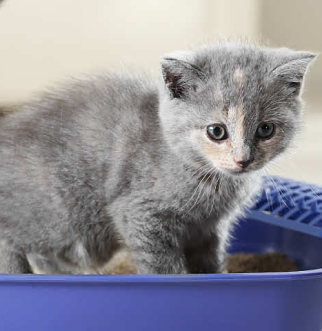
Cats are naturally very clean and chances are your kitten will already have learned how to use the litter box from her mother before she comes to live with you.
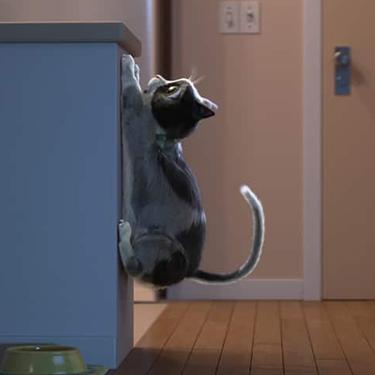
What is the best food for an overweight cat? Learn all about weight control food for cats, including what's in it and how it works.
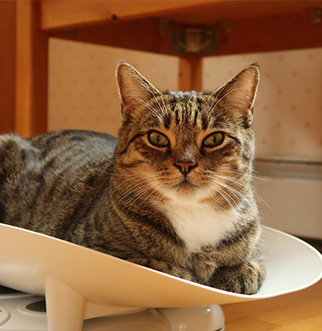
How do you get a cat to lose weight? Learn all about cat foods for weight loss, including how to choose weight control cat food and exercise tips.
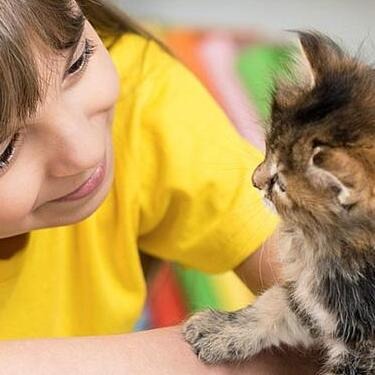
Discover how to train your cat, starting with very basic first steps that both reward good behavior and discourage the bad.

Put your cat on a diet without them knowing
Our low calorie formula helps you control your cat's weight. It's packed with high-quality protein for building lean muscles, and made with purposeful ingredients for a flavorful, nutritious meal. Clinically proven antioxidants, Vitamin C+E, help promote a healthy immune system.
Put your cat on a diet without them knowing
Our low calorie formula helps you control your cat's weight. It's packed with high-quality protein for building lean muscles, and made with purposeful ingredients for a flavorful, nutritious meal. Clinically proven antioxidants, Vitamin C+E, help promote a healthy immune system.

